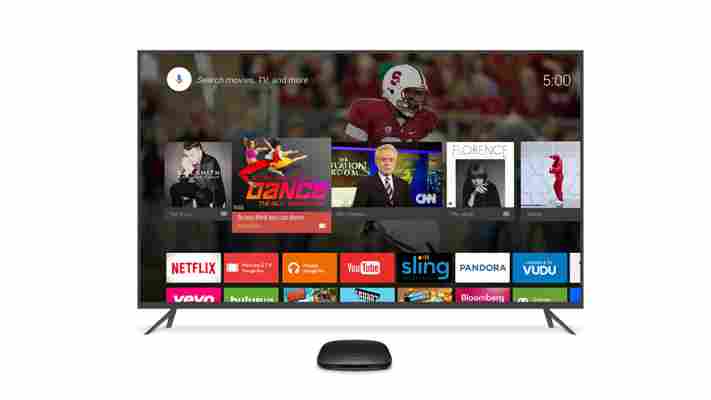Amazon today announced two models for its Fire tablet line that take affordability to a whole new level. The Fire HD 6 costs $99, while a 7-inch model starts at $139.

To put that into perspective, Amazon’s entry-level color tablets now cost roughly as much as the Paperwhite e-reader. Pre-orders for the new devices begin tonight ahead of an October ship date.
Both tablets will run Fire OS 4 Sangria . New software features include Profiles for switching between family members and ASAP for casting video to the Fire TV set-top box.
The Fire HD 6 sports a screen density of 252 pixels-per-inch, compared to 216 PPI for the HD 7. Both tablets includes a 1.5GHz quad-core process. The rear camera records 1080p video, but Amazon didn’t specify the resolution of still photos. The company claims the devices will get eight hours of battery life while reading, listening, watching and browsing on them.
Amazon has also developed a Kids Edition of the Fire HD 6 and HD 7, which cost $149 and $189 respectively. The tablets come with soft protective cover, a child-friendly OS with parental settings and a two-year replacement guarantee if it breaks. Customers also receive a one-year subscription to the company’s FreeTime Unlimited service for kids content.
Essentially, the Kids Edition is the regular Fire HD 6 and HD 7 bundled with a warranty, case and content subscription to cater to families. The Kids Edition will also ship in October.
With the Amazon Fire HD 6 and HD 7, Amazon has managed to make a tablet that breaks the crucial $100 price barrier. The company deserves credit for packing a respectable amount of features into a budget device. This could be a popular gift this holiday season for family members that don’t yet own a tablet.
➤ The All-New Amazon Fire HD
Read next: Amazon introduces the next-gen Fire HDX 8.9 tablet with the latest Fire OS 4 Sangria
UK operator EE unveils new 4G plans from £13.99 and Huawei-made, own-brand £99 ‘Kestrel’ handset
UK mobile operator EE has introduced a new range of tariffs and a low-cost, own-brand 4G LTE-equipped handset for more price-sensitive consumers.

Announced today, the new plans start from £13.99 per month and are available with a two year commitment. The operator also introduced new options available for users on 4G Extra and Business plans.
At the entry-level, there’s now a £13.99 package which includes unlimited texts, 500 minutes of calls and 500MB of 4G data. Increasing that to £18.99 doubles the data and number of inclusive calling minutes, and bumping it up to £23.99 or £29.99 per month will net you unlimited texts and calls with 2GB or 5GB of data respectively.
On these 24 month plans, customers can choose a free handset included with no up-front cost, but these are limited to the Alcatel Idol S or the EE Kestrel handset, introduced alongside the new plans.
EE also expanded the options for its 4G Extra tariffs. From today, customers can sign up for 4G Extra from £21.99 which includes 1000 minutes, unlimited texts and 2GB of data. Monthly commitments range up to a massive £74.99 per month for 50GB of usage.
Rounding off the list of tariff updates are some new options for Shared 4G plans (only available to customers already on a contract of at least £23 per month) starting from £17 per month and a range of new entry-level and Business Extra plans starting from £17 per month and going up to £35 for 3GB of data.
The Huawei-manufactured but EE branded Android device will be available from “the end of April”, according to the operator. On board is a 1.2GHz Qualcomm quad-core processor, 4.5-inch qHD display, 8GB of on board storage (expandable via microSD) and a 5-megapixel camera on the rear.
Naturally, there’s 4G LTE support too. The handset is available for free on the £13.99 per month plan, or can be purchased for £99.99 for use on EE’s 4G pay as you go tariff.
EE says it’s just the first in a range of its own-branded smartphones, although we’re not quite sure if they’ll all be focused on the lower end of the value scale or if there will be more expensive ‘premium’ devices as well.
The drive to increase the number of consumers that can afford to access its core 4G service by introducing lower cost tariffs and devices comes in response to a more competitive market for 4G in the UK overall. With O2, Vodafone and Three all now ramping up their rival services, EE has been forced to adapt to changing market conditions. Of course, ensuring you have a reliable network is part of the equation too.
Xiaomi’s new 4K HDR-capable Android TV set-top box is coming to the US
Although it’s well known across Asia for its excellent smartphones , Xiaomi’s presence in the US has been minimal, with only accessories like headphones available for sale since it opened its online store there last May .

But at Google I/O 2016 , the Chinese hardware maker had a surprise for the American market: a 4K-ready Android TV-based set-top box for all your video streaming and gaming needs. The company says that, unlike all its other products, it will first launch in the US.
Xiaomi says its Mi Box will be capable of running 4K UHD video at 60fps and supporting HDR10, a standard for high dynamic range playback that promises better contrast and color. YouTube , Netflix and Amazon have already announced that their streaming platforms will support it soon.
Under the hood is a quad-core ARM Cortex-A53 CPU and Mali 450 GPU, paired with 2GB RAM and 8GB of onboard storage. You can also plug in USB drives to increase space. As for audio, the Mi Box supports Dolby Digital Plus and DTS Surround Sound, which promise a cinema-like listening experience at home.
As with other Android TV boxes, you can control the device with its accompanying Bluetooth remote control that supports voice search and game control. The company will also sell a console-style Mi Game Controller separately.
It’ll be interesting to see if Xiaomi can make a name for itself in the US with an Android TV-based device. The company has been known to deliver high-quality products at reasonable prices in markets like India and China.
However, it doesn’t seem like Xiaomi wants to get into the streaming content business in the US, as it does in its home market. In China, its set-top boxes work with the company’s own streaming service that offers a range of locally produced shows and movies.
At present, it doesn’t have a lot of competition to worry about – only a handful of brands like Google’s own Nexus label, Sony , Sharp, Razer and Nvidia currently offer Android TV-based devices. With clever pricing, the Chinese firm could well rule this roost once it launches.
Xiaomi hasn’t yet confirmed availability and pricing for the Mi Box in the US.
